Red Rock Canyon, near Las Vegas, is a protected area known for its stunning sandstone formations and diverse climbing opportunities for all skill levels. A popular destination for outdoor enthusiasts, it offers a unique blend of natural beauty and adventure, attracting climbers worldwide with its accessible trails and breathtaking landscapes.
1.1 Location and Significance
Red Rock Canyon National Conservation Area is located 17 miles west of Las Vegas, Nevada, within the Mojave Desert. This protected area is renowned for its striking Aztec Sandstone formations, offering a unique landscape for outdoor adventures. Managed by the Bureau of Land Management, it is a year-round destination for climbers and nature enthusiasts. Its proximity to Las Vegas makes it a popular spot for both locals and tourists, combining natural beauty with accessible trails and climbing routes, making it a significant landmark in the region.
1.2 Climbing Opportunities
Red Rock Canyon offers diverse climbing opportunities, catering to all skill levels. With thousands of routes, including sport, trad, and boulder options, climbers can explore unique sandstone formations. The area features routes ranging from easy 5.6 climbs to challenging 5.12 ascents, making it ideal for both beginners and experienced climbers. The scenic beauty and variety of climbs, including multi-pitch routes, attract enthusiasts worldwide. The canyon’s accessible trails and stunning landscapes provide an unparalleled outdoor experience, making it a premier destination for rock climbing in the American Southwest.

Climbing in Red Rock Canyon
Red Rock Canyon offers a unique climbing experience with its iconic sandstone formations, diverse routes, and breathtaking views. Located near Las Vegas, it provides an accessible yet thrilling outdoor adventure.
2.1 Types of Climbs Available
Red Rock Canyon offers a variety of climbs catering to all skill levels. From easy beginner routes to challenging expert climbs, the area features top-rope, lead climbing, and bouldering options. The sandstone formations provide excellent grip and diverse textures, making it an ideal location for both traditional and sport climbing. With routes ranging from 5.6 to 5.12, climbers can explore single-pitch and multi-pitch climbs, ensuring a unique and rewarding experience for everyone.
2.2 Popular Climbing Routes
Red Rock Canyon boasts iconic routes like the “Cat in the Hat” and numerous multi-pitch climbs. Guides often recommend routes based on skill levels, ensuring climbers enjoy challenging yet manageable experiences. The area’s diverse terrain offers routes for all abilities, from 5.6 to 5.12, making it a climber’s paradise. With scenic backdrops and unique sandstone formations, these routes provide unforgettable adventures, catering to both beginners and seasoned climbers seeking thrilling challenges amidst breathtaking natural beauty;
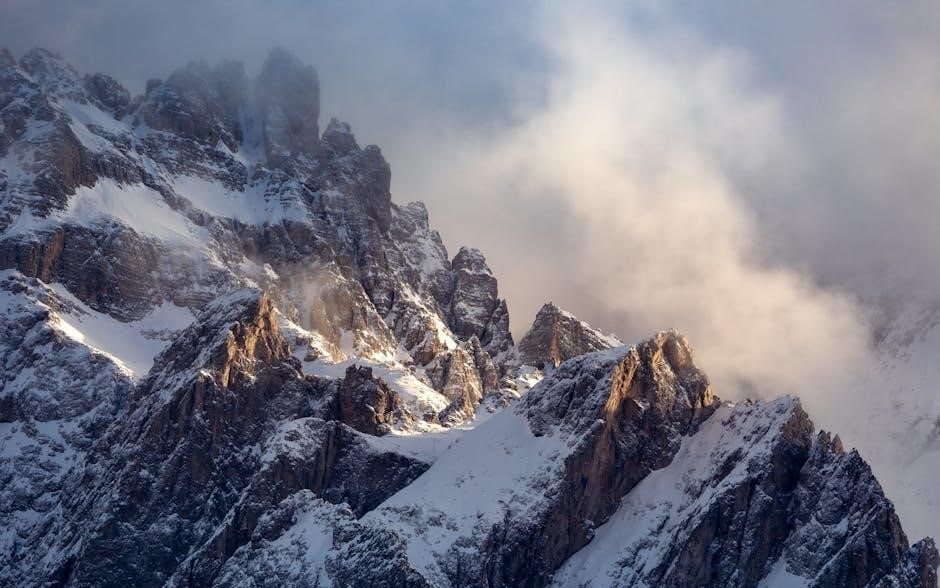
Experienced guides offer personalized climbing experiences, ensuring safety and enjoyment. With nearly 40 years of expertise, they cater to all skill levels, providing tailored adventures in Red Rock’s stunning landscapes.
3.1 Mountain Guides and Their Experience
The Mountain Guides at Red Rock Canyon boast nearly 40 years of experience, offering expert instruction and guided climbs. AMGA-certified, they specialize in various disciplines, ensuring safety and fun. With extensive knowledge of Red Rock’s unique sandstone formations, they provide personalized climbing experiences tailored to all skill levels. From beginner-friendly routes to advanced multi-pitch climbs, their expertise ensures a memorable adventure. Their deep understanding of the terrain and commitment to safety make them a trusted choice for climbers seeking to explore Red Rock’s iconic landscapes.
3.2 Certified Guide Services
Certified guide services in Red Rock Canyon ensure a safe and personalized climbing experience. AMGA-certified guides offer expert instruction and tailored itineraries based on climbers’ goals and skill levels. With extensive local knowledge, they provide unparalleled access to Red Rock’s iconic routes. Their deep understanding of the terrain and commitment to safety make them a trusted choice for climbers of all abilities. Whether you’re a beginner or an advanced climber, these certified services guarantee a memorable and secure adventure in one of the world’s most spectacular climbing destinations.
Guide Details and Certifications
Red Rock guides are AMGA-certified with nearly 40 years of experience, offering personalized itineraries and ensuring a safe, expert climbing experience in Red Rock Canyon.
4.1 AMGA Certification
The American Mountain Guides Association (AMGA) certification ensures guides meet rigorous standards for rock climbing instruction and safety. AMGA-certified guides at Red Rock Canyon undergo extensive training, demonstrating expertise in risk management, technical skills, and leadership. This certification is recognized nationwide, guaranteeing climbers a high level of professionalism and reliability. With AMGA certification, climbers can trust their guides to provide a safe and enjoyable experience, whether tackling beginner routes or advanced multi-pitch climbs in Red Rock’s unique sandstone formations.
4.2 Guide Reviews and Testimonials
Climbers consistently praise Red Rock guides for their expertise and personalized attention. Many highlight their guides’ deep knowledge of the area and ability to tailor climbs to skill levels. Reviews often mention the safety-conscious approach and friendly demeanor of the guides. One climber noted, “Our guide was incredibly knowledgeable and made the experience both safe and enjoyable.” Testimonials frequently emphasize the guides’ flexibility and ability to adapt plans based on climbers’ preferences, ensuring a memorable and fulfilling adventure in Red Rock Canyon.
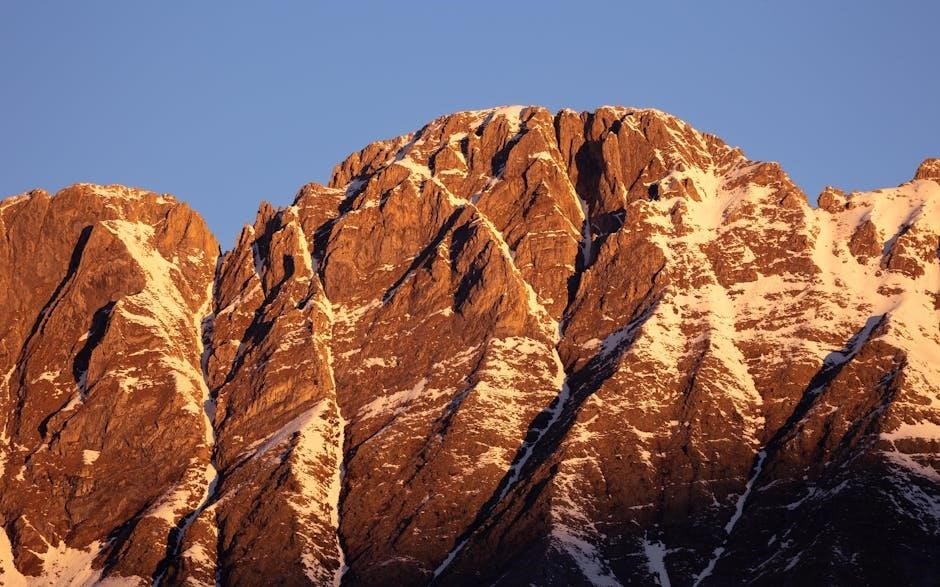
The Red Rock Climbing Center
The Red Rock Climbing Center offers top-rope and lead climbing on over 8,000 square feet of walls, designed by renowned climbers, providing an excellent indoor climbing experience.
5.1 Facilities and Amenities
The Red Rock Climbing Center boasts over 8,000 square feet of climbing walls, designed by experts like Tony Yaniro and Doug Englekirk. The facility features top-rope and lead climbing options, ensuring a diverse experience for climbers of all levels. Additional amenities include a comprehensive gear shop, training areas, and knowledgeable staff to assist with equipment and techniques. The center also hosts workshops and events, fostering a community-driven environment for climbers to learn and grow their skills in a safe and supportive setting.
5.2 Indoor Climbing Options
The Red Rock Climbing Center offers extensive indoor climbing walls, totaling over 8,000 square feet, designed by renowned climbers Tony Yaniro and Doug Englekirk. The walls feature diverse routes, from beginner-friendly climbs to challenging overhangs, catering to all skill levels. The facility mimics outdoor climbing conditions, providing a realistic training environment. Climbers can rent equipment and receive expert instruction, making it an ideal spot for both newcomers and experienced climbers to refine their skills in a safe, controlled setting.
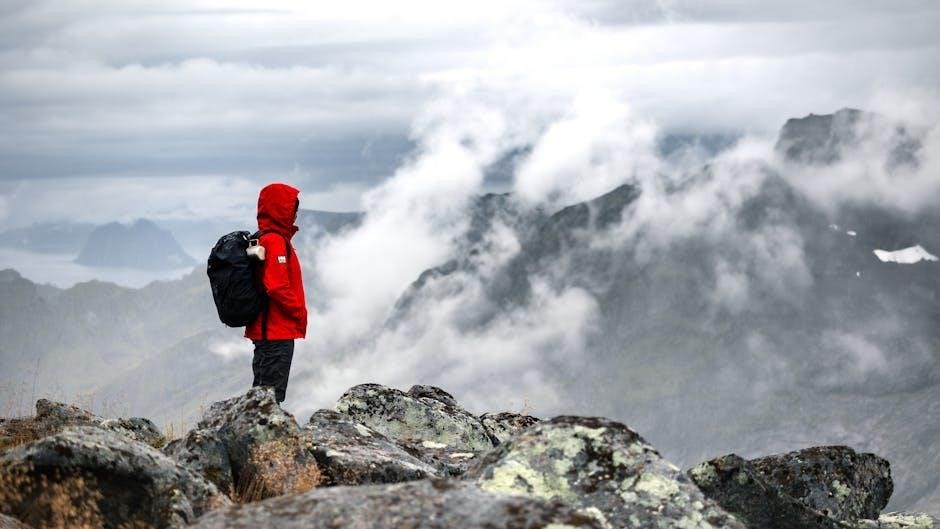
Safety and Risk Management
Certified guides ensure climbers use proper equipment and techniques, minimizing risks. Regular safety checks and emergency preparedness are prioritized to protect climbers in Red Rock Canyon.
6.1 Safety Measures and Practices
Certified guides ensure climbers use proper equipment and techniques, minimizing risks. Regular safety checks and emergency preparedness are prioritized to protect climbers in Red Rock Canyon. Guides assess routes for potential hazards and provide personalized instruction to match skill levels. They emphasize proper belaying, anchoring, and communication to maintain a secure environment. Emergency response plans are in place, including first aid and evacuation protocols, ensuring climbers receive prompt assistance if needed. These measures help create a safe and enjoyable climbing experience for all participants.
6.2 Emergency Procedures
Certified guides are trained to handle emergencies, ensuring climbers’ safety. In case of an incident, guides assess the situation, provide first aid, and coordinate evacuations if necessary. They carry communication devices to call for help and know the best routes for emergency exits. Guides also educate climbers on basic emergency responses. With their expertise, climbers can rely on prompt and effective assistance, minimizing risks and ensuring a secure experience in Red Rock Canyon.
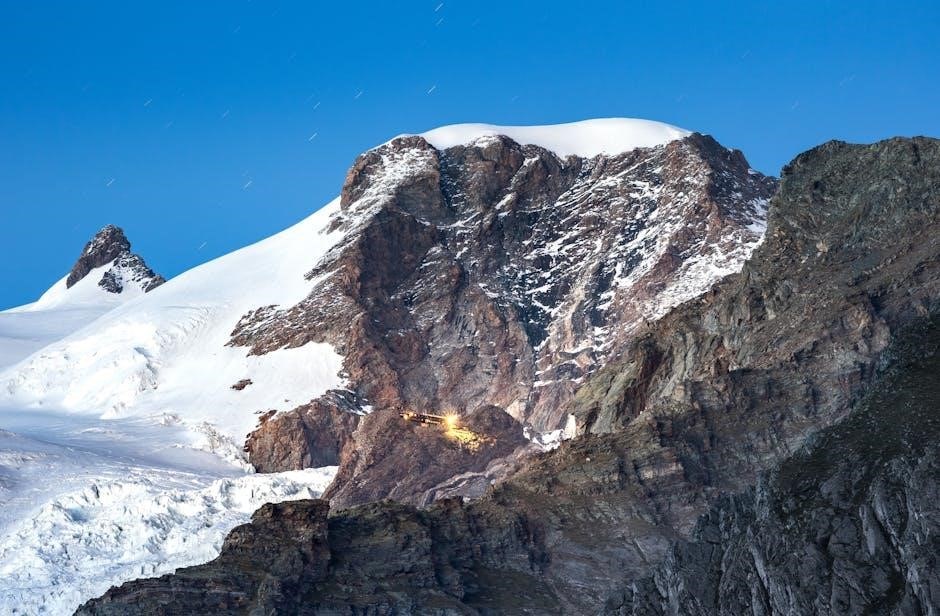
Environmental Considerations
Protecting Red Rock Canyon’s natural beauty is crucial. Climbers must adhere to conservation efforts, minimizing environmental impact to preserve its unique ecosystems and sandstone formations for future generations.
7.1 Conservation Efforts
Conservation efforts in Red Rock Canyon focus on preserving its natural ecosystems. The Bureau of Land Management enforces strict regulations to protect the sandstone formations and wildlife. Climbers are encouraged to stay on designated trails, avoid damaging vegetation, and carry out all waste. Educational programs and ranger-led initiatives promote environmental awareness. These measures ensure the area remains pristine for future generations to enjoy its unique geological features and biodiversity. Collaborative efforts between local authorities and climbing communities help maintain the balance between recreation and conservation.
7;2 Environmental Impact
Red Rock Canyon’s fragile ecosystem faces environmental challenges due to increased climbing activity. Soil erosion, chalk residue on rocks, and human waste pose threats to its natural beauty. The area’s popularity attracts thousands of climbers annually, putting pressure on vegetation and wildlife habitats. Efforts to mitigate these impacts include designated climbing routes and waste management programs. Climbers are urged to practice Leave No Trace principles to preserve the canyon’s pristine environment for future generations while enjoying its unique geological features.

Planning Your Climbing Trip
Plan your Red Rock climbing trip by booking certified guides, selecting routes based on skill level, and preparing for variable weather conditions year-round.
8.1 Best Time to Visit
The best time to visit Red Rock Canyon for climbing is during the spring (March to May) and fall (September to November), when temperatures are mild and ideal for outdoor activities. Summers can be extremely hot, while winters are cooler but still manageable. Plan your trip around weather forecasts to ensure optimal climbing conditions. Early mornings and late afternoons are recommended to avoid midday heat. Popular routes can get crowded, so consider visiting during weekdays for a more serene experience. Proper planning ensures a safe and enjoyable climbing adventure in this scenic destination.
8.2 Trip Duration Recommendations
The ideal trip duration for climbing in Red Rock Canyon depends on your experience and goals. Beginners might prefer a half-day trip to get a taste of climbing, while experienced climbers can enjoy full-day or multi-day adventures. For those seeking a comprehensive experience, a 2-3 day trip allows exploration of multiple routes and techniques. Plan according to your skill level and interests, ensuring enough time to absorb the scenic beauty and challenges. Consulting with a certified guide helps tailor the trip for a memorable and safe experience.
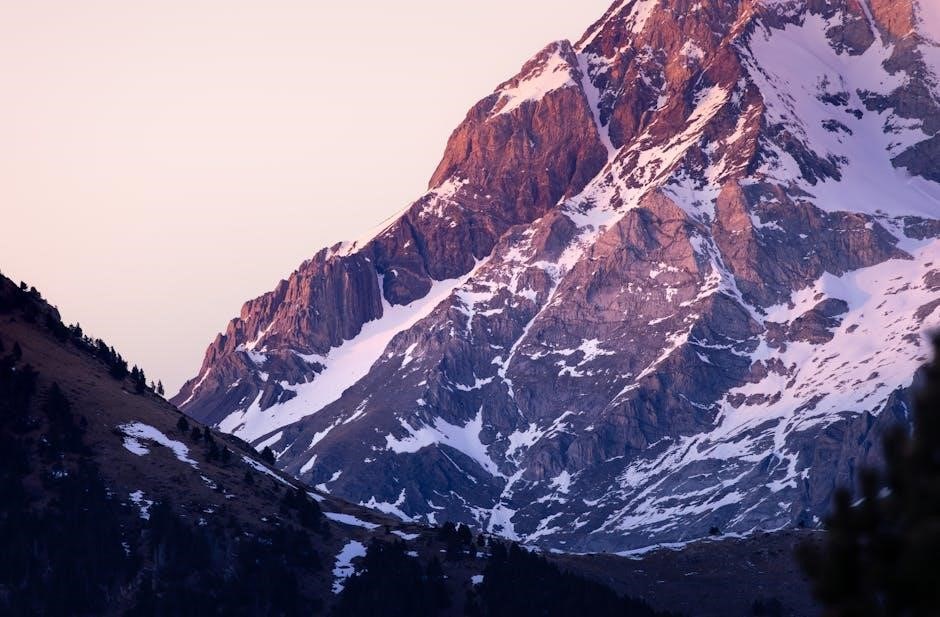
Cost and Budgeting
Red Rock climbing guide services typically cost between $150 and $300 per person per day, depending on the guide’s experience and the climb’s difficulty. Additional expenses include gear rentals and permits, which can add $50 to $100 to your total cost. Budgeting ahead ensures a stress-free experience, allowing you to focus on enjoying the climb and the scenic beauty of Red Rock Canyon.
9.1 Guide Service Costs
Red Rock climbing guide services typically range from $150 to $300 per person per day, depending on the climb’s difficulty and the guide’s experience. Certified guides, often AMGA-certified, charge higher rates due to their expertise and safety standards. Costs may also vary based on group size, with discounts available for larger groups. Budgeting for a guided climb should include these fees, which cover professional instruction, route planning, and safety measures. Locally-owned services, like Red Rock Climbing Guides, offer competitive pricing while ensuring a safe and enjoyable experience.
9.2 Additional Expenses
Beyond guide fees, climbers should budget for gear rentals, transportation, and park entrance fees. Gear rentals, such as ropes and harnesses, cost $20–$50 per day. Transportation to Red Rock Canyon, located 17 miles west of Las Vegas, may require a rental car, adding $40–$80 daily. Parking fees are $15 per vehicle. Food, lodging, and personal climbing equipment are additional expenses. Guide services often recommend local rental shops for equipment needs, ensuring climbers are well-prepared for their adventure.
Necessary Gear and Equipment
Essential climbing gear includes ropes, harnesses, carabiners, belay devices, and climbing shoes. Rentals are available at local shops, ensuring climbers have proper equipment for their adventures.
10.1 Essential Climbing Gear
Essential climbing gear includes durable ropes, comfortable harnesses, carabiners, belay devices, and sturdy climbing shoes. Helmets and chalk bags are also crucial for safety and grip. Additional items like quickdraws, nuts, and cams may be needed for specific routes. Climbers should ensure all equipment is in good condition and suitable for the type of climb. Guide services often provide gear, but renters can find everything at local outdoor shops. Proper equipment ensures a safe and enjoyable experience in Red Rock Canyon’s unique terrain.
10.2 Rental Options
Climbers can rent essential gear from local outdoor shops or guide services in Las Vegas; The Red Rock Climbing Center offers equipment rentals, including ropes, harnesses, and shoes. Many guide services provide gear as part of their packages, ensuring climbers have everything needed for a safe and enjoyable experience. Rentals are a convenient option for those traveling or without their own equipment, allowing easy access to Red Rock Canyon’s climbing opportunities.
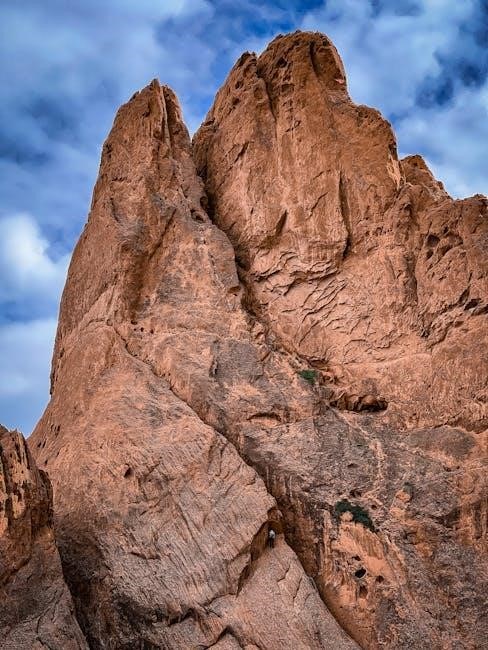
Physical Conditioning
Physical conditioning is crucial for tackling Red Rock Canyon’s climbs. While some routes are accessible to beginners, others demand higher endurance and strength. Guides often help climbers assess and meet these demands.
11.1 Fitness Requirements
Fitness requirements for climbing in Red Rock Canyon vary based on the route difficulty. Climbers should possess adequate cardiovascular endurance, muscular strength, and flexibility. For multi-pitch climbs, endurance is key, while shorter, technical routes demand focused strength. Guides often assess climbers’ fitness levels to ensure safe participation. Proper conditioning enhances performance and reduces injury risk, allowing climbers to fully enjoy the experience. Beginners can start with easier routes, while advanced climbers should maintain higher levels of physical preparedness for challenging ascents.
11.2 Training Tips
Building endurance through cardio exercises like running or cycling is essential for multi-pitch climbs. Incorporate strength training, focusing on upper body and core muscles, to improve power and stability. Practice flexibility routines to maintain range of motion. Consider technique workshops to refine skills and efficiency. Gradually increase climb difficulty to adapt to physical demands. Mentorship from experienced guides can provide personalized feedback. Prioritize rest and recovery to avoid injury and enhance performance. A well-rounded training regimen ensures climbers are prepared for Red Rock’s diverse challenges and elevates their overall climbing experience.
Local Culture and Attractions
Red Rock Canyon is surrounded by vibrant Las Vegas culture, offering iconic attractions like the Strip, Cirque du Soleil shows, and nearby Valley of Fire State Park.
12.1 Nearby Las Vegas Attractions
Las Vegas offers a vibrant array of attractions just minutes from Red Rock Canyon. The iconic Strip features elaborate displays, world-class shows, and diverse dining options. Visitors can explore landmarks like the Bellagio Fountains, Venetian canals, and High Roller observation wheel. Nearby, Valley of Fire State Park provides stunning natural landscapes, while Hoover Dam offers historical and engineering insight. These attractions complement the outdoor adventures of Red Rock, making the area a unique blend of nature and entertainment.
12.2 Local Events and Festivals
Las Vegas and Red Rock Canyon host various events that cater to climbers and outdoor enthusiasts. The annual Red Rock Climbing Festival offers workshops, competitions, and networking opportunities for climbers of all levels. Additionally, Las Vegas hosts cultural festivals, outdoor concerts, and sporting events throughout the year. These events provide a vibrant contrast to the serene natural beauty of Red Rock, creating a well-rounded experience for visitors. Whether you’re climbing or exploring, there’s always something to enjoy in this dynamic region.
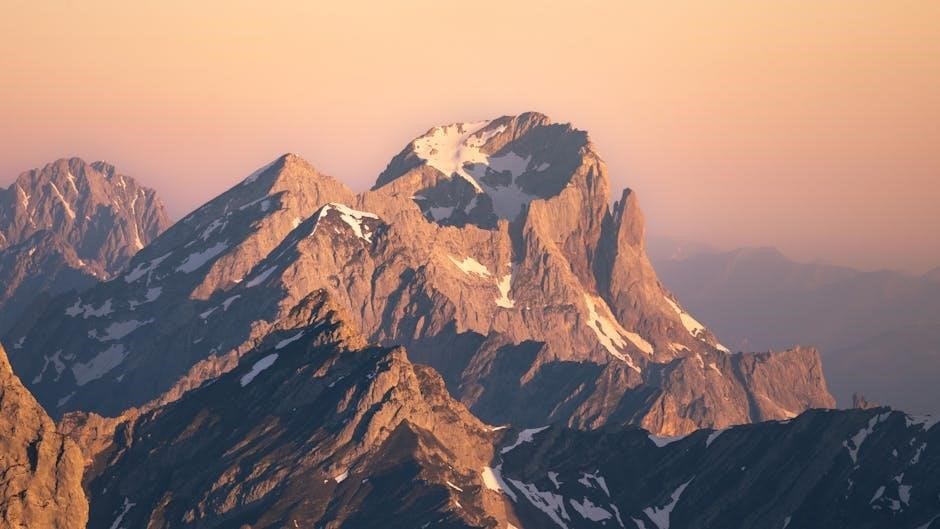
Climbing Tips and Tricks
Experienced guides recommend thorough preparation, understanding weather conditions, and staying hydrated. Essential gear and proper footwear are crucial for a safe and enjoyable climbing experience in Red Rock.
13.1 Beginner Tips
For newcomers to climbing, Red Rock Canyon offers an ideal environment to start. Begin with shorter, easier routes to build confidence and skill. Essential tips include proper footwear, staying hydrated, and using sunscreen. Always assess the route difficulty and communicate clearly with your guide. Practice basic knots and belaying techniques before heading out. Start with top-rope climbs to gain experience, and gradually progress to more challenging routes. Listening to your guide’s instructions and staying focused are key to a safe and enjoyable climb.
13.2 Advanced Techniques
For experienced climbers, Red Rock Canyon offers challenging routes up to 5.12 in difficulty. Advanced techniques include refining footwork, optimizing energy use, and mastering multi-pitch strategies. Focus on precise anchor placement and efficient belaying systems. Practice dynamic movements and edge control on steeper terrain. Experienced guides recommend honing mental focus and stamina for longer climbs. Utilize rests effectively and maintain a steady pace to conserve energy. The canyon’s unique sandstone requires adaptability, making it a great place to refine advanced climbing skills and tackle complex routes with confidence.
Climbing Etiquette
Respect the environment by minimizing impact, staying on designated trails, and carrying out waste. Be courteous to other climbers, yield when necessary, and maintain a safe distance.
14.1 Respect for the Environment
Respecting the environment is crucial when climbing in Red Rock Canyon. Stay on designated trails to avoid erosion, and never litter or remove plants. Climbers should avoid damaging vegetation or sandstone formations, as these are protected natural resources. Wildlife, including unique desert species, should not be disturbed. Proper waste disposal is essential, and climbers are encouraged to pack out all trash. Following these guidelines helps preserve the area for future generations and maintains the delicate balance of the ecosystem. Penalties may apply for violating conservation rules.
14.2 Interaction with Other Climbers
Positive interaction with other climbers is essential in Red Rock Canyon. Always yield to other climbers on routes and communicate clearly to avoid accidents. Respect fellow climbers’ space and equipment, and be mindful of noise levels to maintain a peaceful environment. Sharing knowledge and offering assistance fosters a sense of community. Remember, climbing is a shared experience, and courteous behavior ensures everyone enjoys their time. Engaging with local climbers and guides can also provide valuable insights and enhance your overall experience in this stunning destination.
Why Choose Red Rock
Red Rock offers unique climbing experiences, stunning sandstone formations, and accessible routes for all skill levels. Its proximity to Las Vegas and diverse climbs make it a top destination.
15.1 Unique Climbing Experiences
Red Rock Canyon offers unparalleled climbing experiences with its vast array of routes, from beginner-friendly climbs to challenging expert routes. The area’s unique sandstone formations provide a variety of terrain, including multi-pitch climbs and bouldering opportunities. Climbers can explore iconic routes like the 5.6 mega classic or push limits on 5.12 expert terrain. With thousands of climbs, the canyon caters to all skill levels, offering a personalized adventure for each climber. The guides’ extensive knowledge ensures a safe and memorable experience, making Red Rock a must-visit destination for climbers seeking diversity and natural beauty.
15.2 Scenic Beauty and Accessibility
Red Rock Canyon’s proximity to Las Vegas makes it an easily accessible climbing destination, offering a stark contrast between natural beauty and urban glamour. The area boasts stunning multi-hued sandstone formations, scenic trails, and panoramic views. Its location just minutes from downtown Las Vegas ensures convenience, while the diverse terrain caters to climbers of all levels. The combination of breathtaking landscapes and ease of access makes Red Rock Canyon a standout choice for climbers seeking both adventure and natural splendor in a unique and inspiring environment.
